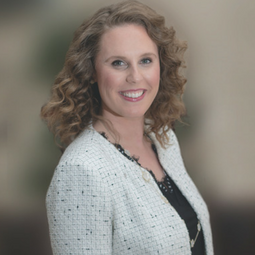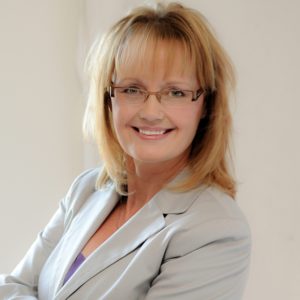How Automation Can Relieve Staff Burden in Senior Care Facilities
Automation technology, which streamlines processes and reduces the need for human input, offers many benefits within the senior care industry. This technology can help save time, avoid human error, and reduce repetitive tasks, leaving staff free to attend to other, more important needs. But perhaps most importantly, automation can maximize staff productivity, a benefit that’s particularly important given the widespread staffing shortages the industry faces.
Here are several ways that senior care organizations can implement automation to relieve staff burden.
Automating Nurse Call Systems

Christine Sanders, MBA, LNHA, CDP, chief operating officer at United Hebrew of New Rochelle
United Hebrew of New Rochelle’s resident nurse call system was 10 years old and used two-way voice functionality. Residents in need of assistance pressed a bell, which dialed the nurse’s station. When nurses were away from the station, the resident heard repeated dialing in their room, and when a nurse answered, the conversation was conducted over a speaker in the resident’s room. The system didn’t identify whether the call came from a bedroom or bathroom, which lengthened response time.
Christine Sanders, MBA, LNHA, CDP, chief operating officer at United Hebrew of New Rochelle, explains that the process of finding a new call system took about two years. “One challenge was finding the right product that would both work with other systems we are using and meet the rules and regulations nursing homes must follow,” she says.
In choosing a new system, United Hebrew looked for efficiency, reporting capabilities to better analyze the quality and efficiency of resident-nurse communication, cost, ease of installation, integration with existing systems, and the ability to wirelessly communicate with mobile devices.
The new system delivers call signals to a touchscreen monitor at the nurses’ station, to a mobile device that each nursing assistant carries, and to a hallway light outside of the resident’s room. The alert identifies whether the resident is in the bedroom or bathroom, so a nursing assistant can respond more directly and promptly to the resident’s needs.
The technology has streamlined communication, since nurses can see just where the call is coming from on their mobile device, no matter where they are in the unit. Eliminating the repeated call noises that residents would hear in their rooms contributes to an environment that’s more home-like. Data reports also show response times, so staff can quickly address performance issues. The reports on when and how frequently residents call have helped United Hebrew better anticipate resident needs and create proactive care plans.
The upgrade has been well-received by staff. “Staff really love it,” says Sanders. “Because of the mobile application, they’re always connected to our residents, no matter where they are on the unit. It’s faster and quieter. The noise reduction has improved the overall environment, too.”
New Rochelle is also installing bed alerts for residents who are at a high risk of falling. If residents move away from their bed, staff will receive a silent alert, allowing them to immediately attend to the residents.
Automating WiFi Performance

Roger Sands, CEO and founder of Wyebot
Countless senior care systems rely on WiFi networks, including everything from health monitoring to resident and family video chats. Roger Sands, CEO and founder of Wyebot, explains that WiFi performance problems can lead to many issues. Organizations might encounter problems with the building’s IoT devices including motion detectors, lighting sensors, thermostats, and smoke and carbon monoxide detectors. Wearable health monitors and resident location trackers might malfunction, and no telehealth services would be available.
Additionally, poor WiFi performance can affect phones, laptops, tablets, streaming services, and personal assistant devices, limiting or preventing residents’ ability to communicate with family members and friends, or to entertain themselves.
But troubleshooting WiFi isn’t always a simple process. “Many performance issues are intermittent,” says Sands. “This can require IT professionals to wait anywhere from minutes to days for the problem to recur.” Often, IT professionals need the problem to recur so they can collect the data needed to identify the root cause of the issue.
“Problems also occur if the correct data can’t be captured by the vendor-specific tools on hand,” Sands explains. “This can lead to finger pointing between different vendors, as everyone’s team tries to identify what has caused the issue. This slows down resolutions.”
Implementing a solution like Wyebot’s Wireless Intelligence Platform™ can simplify the process of monitoring and analyzing WiFi performance problems. In the process, such technology can help prevent or minimize WiFi downtime, preventing many of the resulting issues a senior care organization could experience. “The platform helps prevent and minimize downtime by proactively and automatically analyzing all network performance, identifying problems as soon as they occur, and immediately alerting IT with all details,” explains Sands.
The platform identifies key information including the performance issue, its root cause, and actionable resolutions that the IT team can take. “With issues and root causes identified in real-time, resolution times are reduced by 90%,” Sands says. “The constant analytical insights that are delivered also keep the network optimized and reliable, with problem tickets reduced by 70%.”
Such a solution could benefit senior care organizations in multiple ways. It can streamline the workload for IT staff, but can also save caregivers and administrative staff time in having to submit IT help tickets and work with IT staff on troubleshooting. By helping to keep WiFi networks performing optimally, this automation technology may prevent or reduce issues like the malfunction of resident location trackers and other WiFi-dependent technology, so staff don’t have to take the time to fix these devices.
Embracing Automation
These examples are just a few potential ways that automation can streamline processes and reduce staff burden. Automation technology requires a financial investment, but it can potentially pay off with increased staff productivity and efficiency.

Paige Cerulli is a contributing writer to i Advance Senior Care.
Related Articles
Topics: Featured Articles , Information Technology , Resident Care , Senior Environments , Technology & IT











